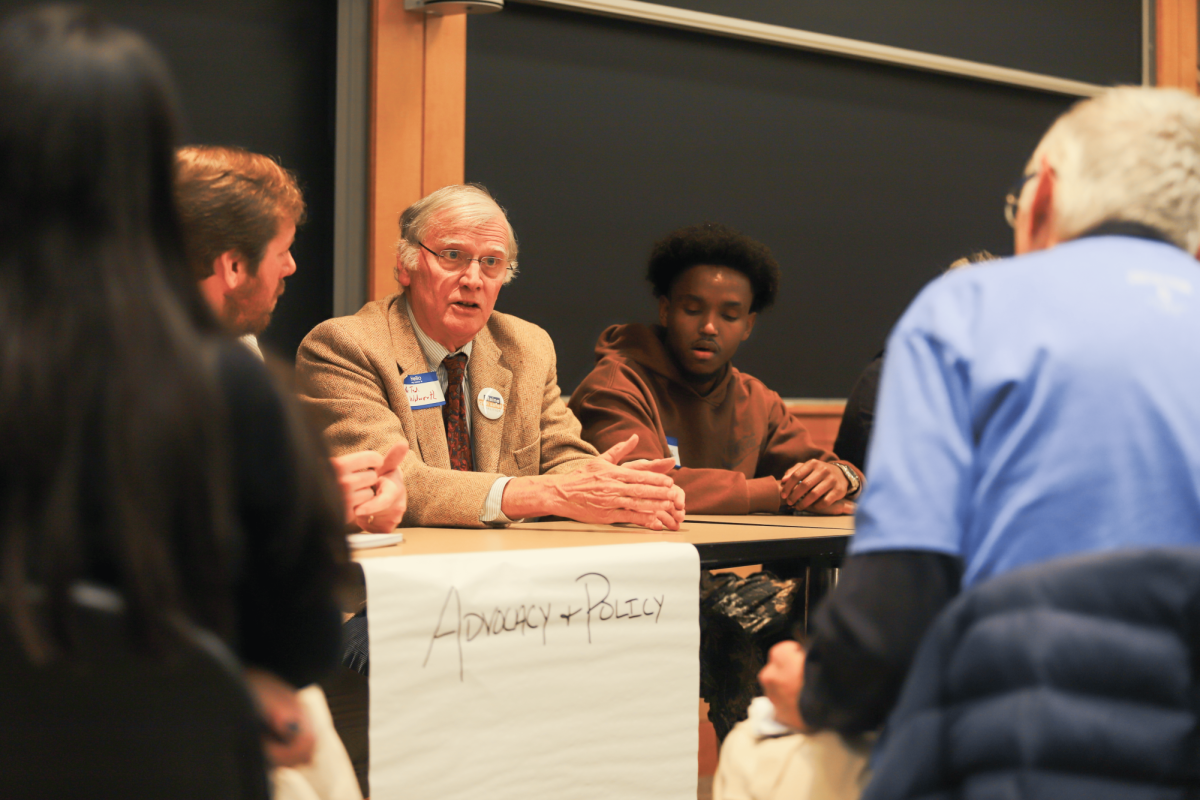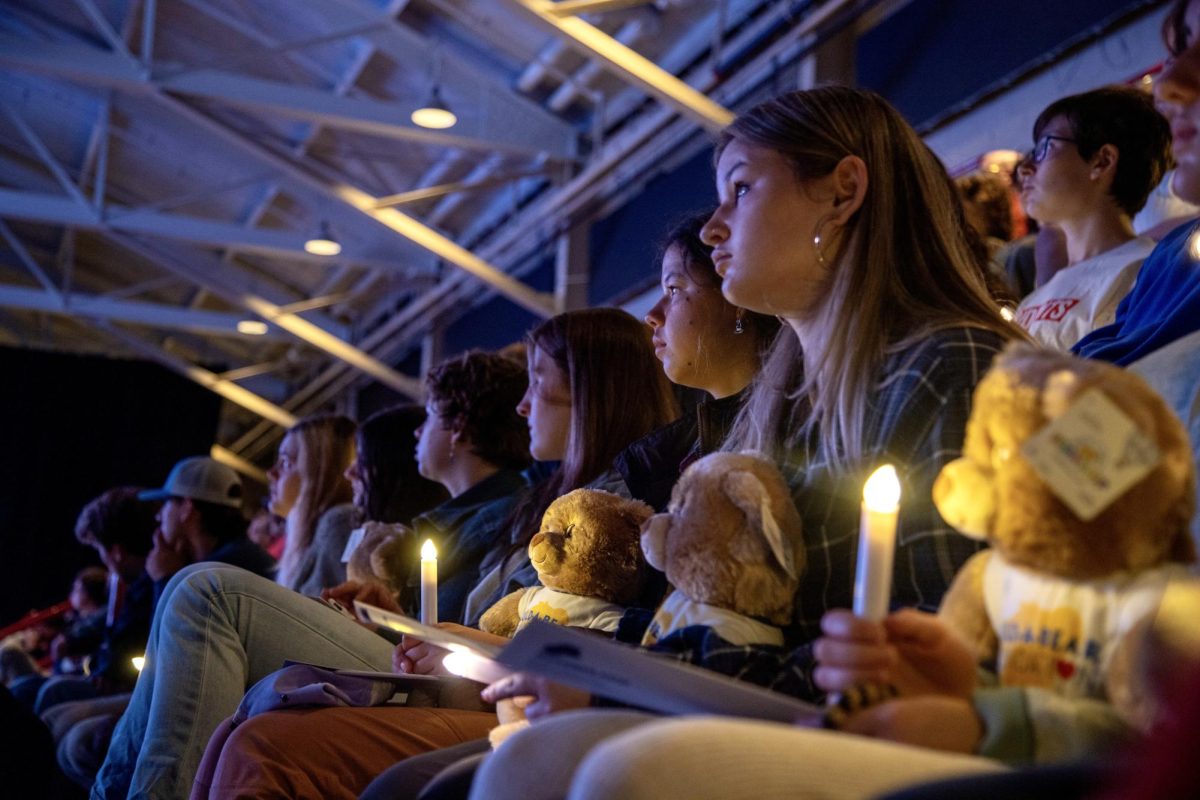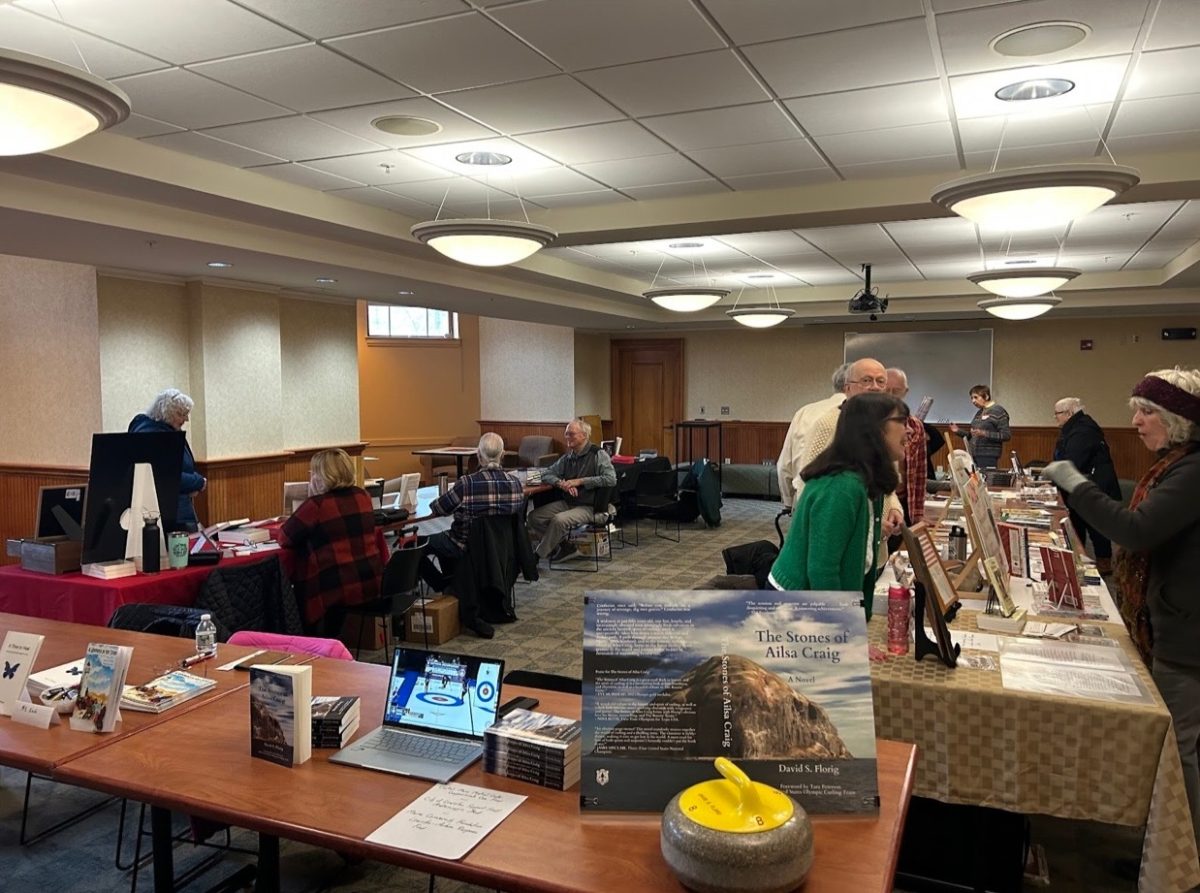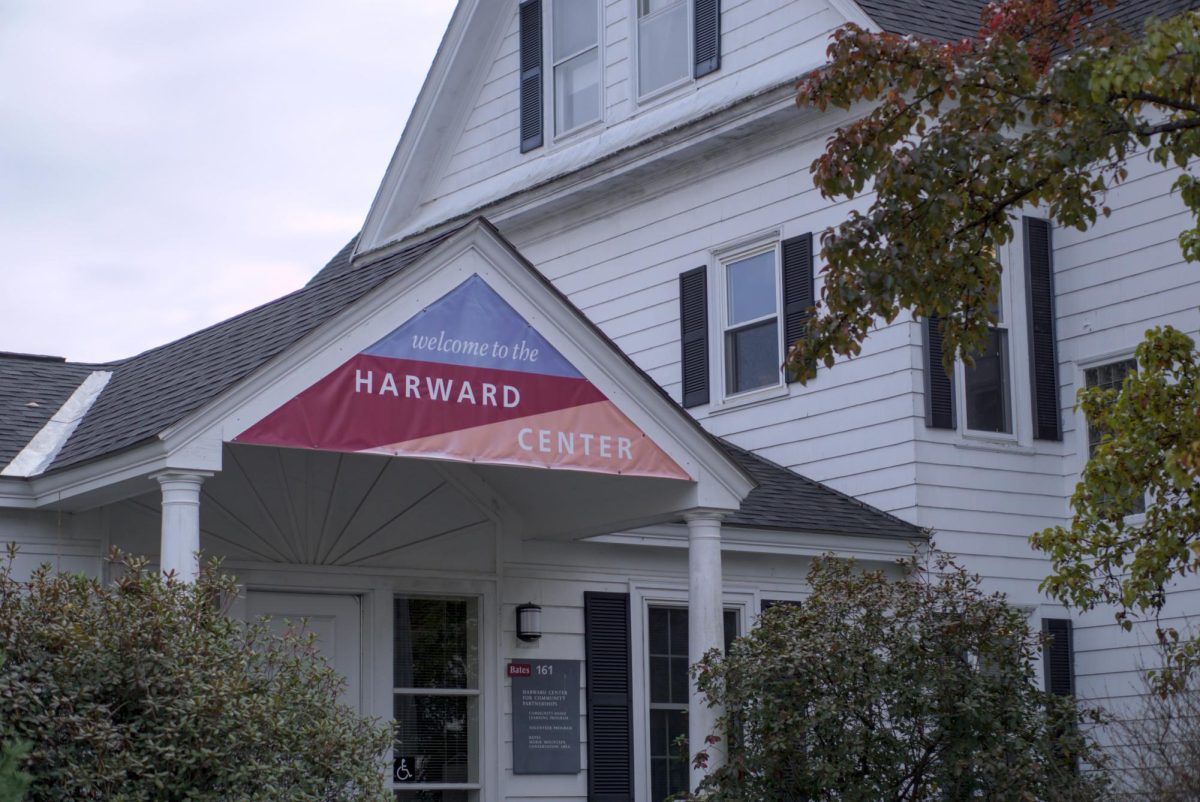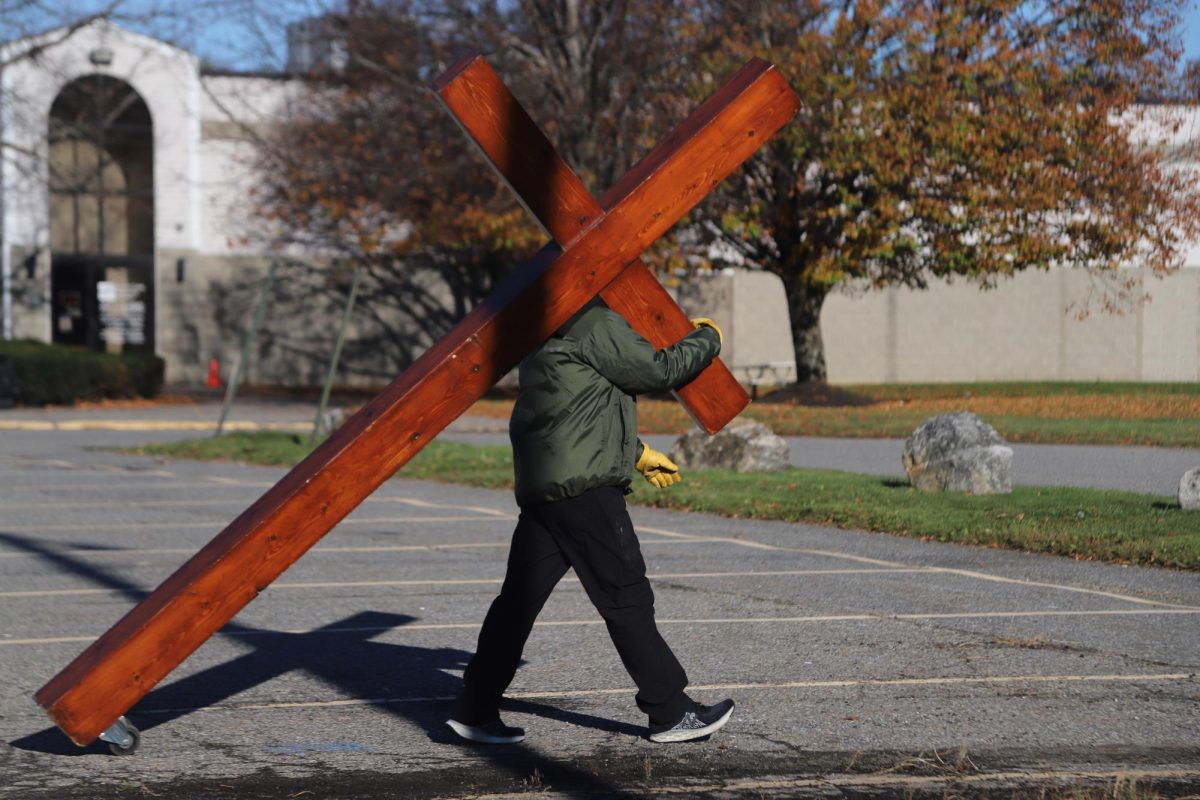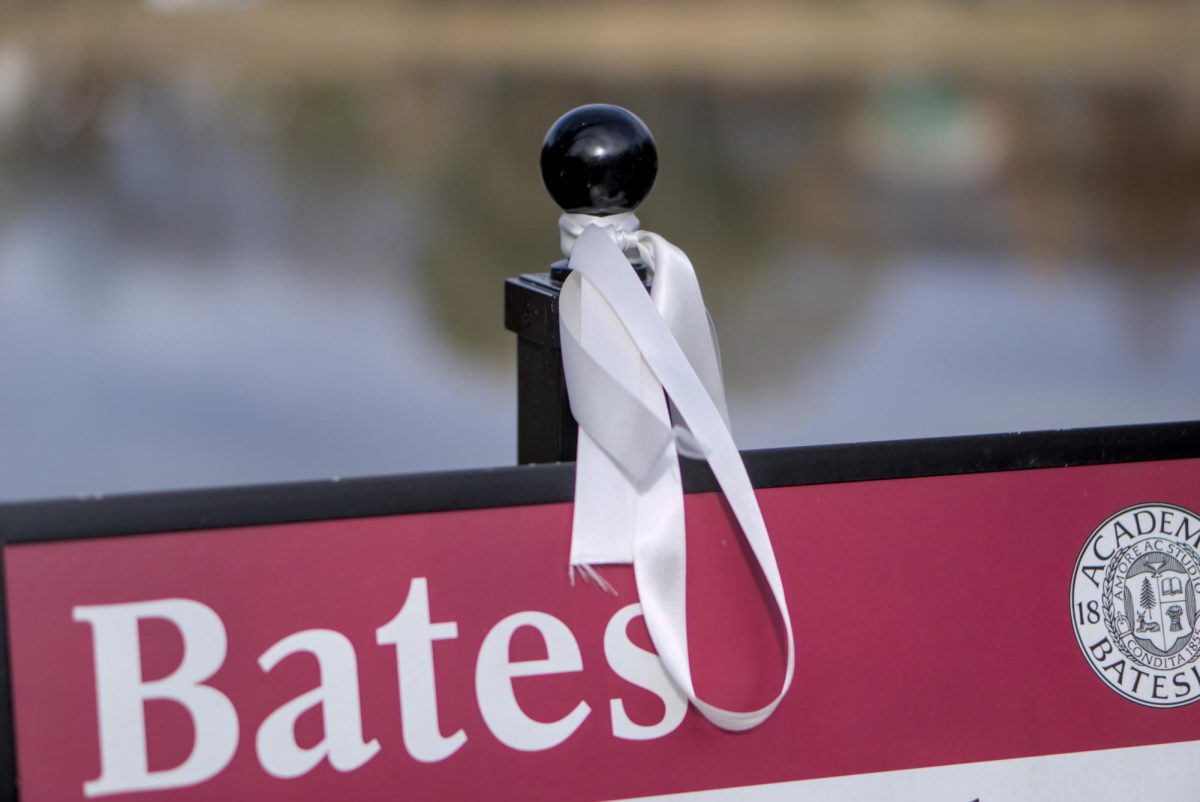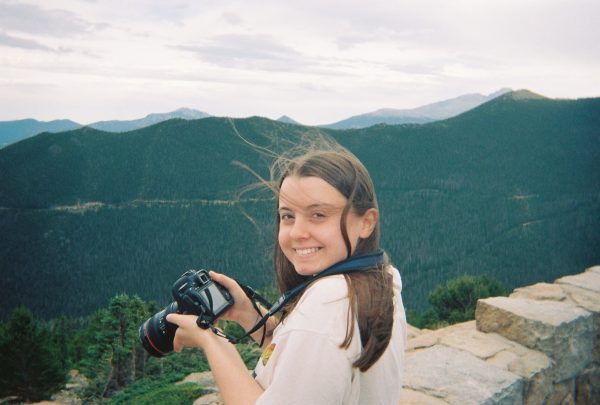The Harward Center hosted the Lewiston Teach-In to Prevent Gun Violence in Pettengill Hall on Tuesday, Dec. 5, attracting several speakers and an audience of students, faculty and Lewiston community members.
Originally spearheaded by Harward Center Associate Director of Democratic Engagement and Student Activism Jenna Vendil, the event was eventually headed up by Morgan Kinney, Associate Director of Community-Engaged Research and Learning, after Vendil went on maternity leave.
“[Vendil] had brought together groups of people – faculty, mostly and our community partner, the Community Organizing Alliance – who had all expressed interest in doing something around gun violence prevention in the aftermath of the shooting,” Kinney said. “I am here…keeping the momentum going.”
Lewiston was rocked on Oct. 25 by a mass shooting that claimed 18 lives and injured 13 more. In the following weeks, some have struggled with how to make change moving forward.
“People are in different places with their processing. But I think a place that some people are in is, ‘What now and how do we keep this from happening again?’ and a lot of frustration and hopelessness,” Kinney said. “This is just something where people can come and direct that energy.”
The event comprised three parts: a panel of speakers discussing various aspects of gun violence and legislation, a Q&A session and breakout groups focusing on advocacy and policy, art and creative thinking and community engagement.
Among the speakers were Bates sociology professor Michael Rocque, UCLA PhD candidates Sarah Wilf and Taylor Reed and retired St. Mary’s Regional Medical Center general surgeon and Maine Gun Safety Coalition advocate Ted Walworth. Panelists spoke on gun policy, activism and recognizing spaces by and for people of color within the fight against gun violence.
Rocque began by defining mass shootings, describing them as “an attack that takes place within 24 hours, resulting in at least four deaths not including the shooter, in a public place, not tied to any other crime,” and gave statistics on the average mass shooting perpetrator and incident.
Rocque reported that mass shootings were more frequent in the southern and western states, with handguns used over 80% of the time. These incidents were more likely to occur in office, retail and restaurant settings. Meanwhile, shooters were overwhelmingly male, over 60% white, usually between the ages of 35 and 49 and frequently unmarried and unemployed. They typically acquired their weapon(s) legally.
Afterwards, Wilf and Reed detailed a study they had done on how gun violence affects communities of color and how those communities often get left behind, including testimonies from young Black activists.
“Community gun violence is a symptom of structural racism,” Reed said in her presentation. “Ultimately, for these communities, gun violence is not a mental health issue. This is a problem that’s directly rooted within…systemic issues that perpetuate these communities.”
Lastly, Walworth discussed how Maine was improving its gun reform – albeit slowly – and shared hopes that the community could work together with the recent trauma of the Lewiston shooting.
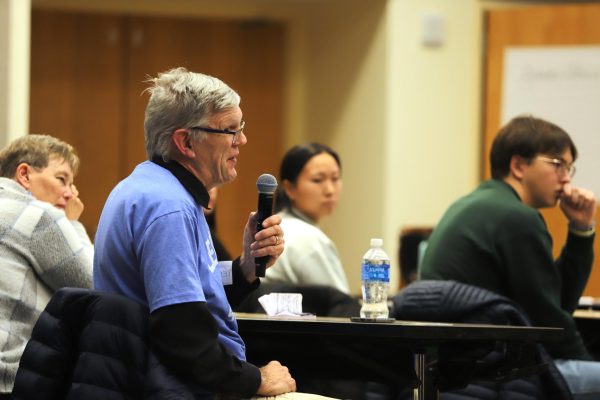
“There’s perhaps going to be some progress; the uphill struggle may be a little easier,” Walworth said.
Attended by people in and out of the Bates community, the Teach-In struck a nerve with many in the wake of Lewiston’s recent tragedy. For retired mental health worker Vernon Cox of Turner, Maine, however, this is not a new issue.
“It was personal because my mother was a paranoid schizophrenic,” Cox said. “So my desire and I have already learned a lot, is that mental health and gun safety need to happen at the same time, right?”
Cox expressed a need to treat violent victims of mental illness as just that: victims.
“They said treat every patient like they were family,” Cox said of his career in mental health. He mentioned that while the Lewiston shooter “did something heinous…his family has to live with that.”
In the Q&A session, Jamie Hollander ’24 was among the few students to raise their hands. Later, she described the importance of attending events like the Teach-In.
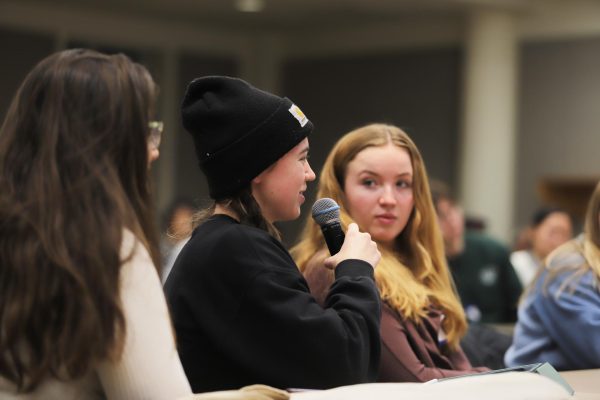
“I think that’s one of the only ways to [take] these feelings of frustration and inaction that we’ve had…and help it go somewhere,” Hollander said.
Overall, Harward Center staff expressed hope that this event would provide a sense of community purpose.
“I hope [the audience will] have learned some kind of clarification they didn’t know about, about the issues and the policy,” Kinney said. “And I hope that they will feel like they have a next step that they can take.”



